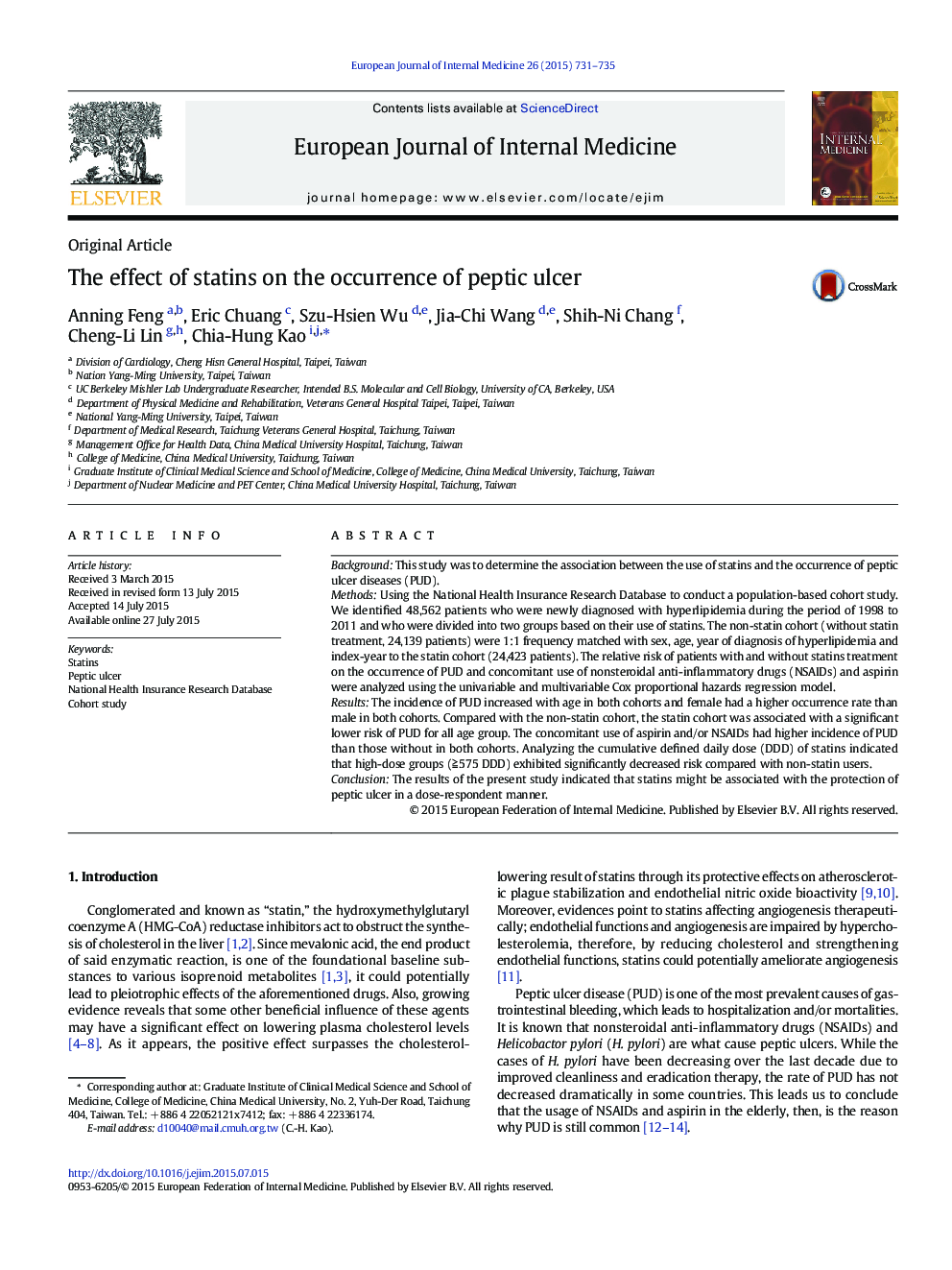| Article ID | Journal | Published Year | Pages | File Type |
|---|---|---|---|---|
| 3466046 | European Journal of Internal Medicine | 2015 | 5 Pages |
•The statin cohort had a significant lower risk of PUD for all age group.•The concomitant use of aspirin and/or NSAIDs had higher incidence of PUD.•High-dose groups (≧ 575 DDD) exhibited significantly decreased risk.
BackgroundThis study was to determine the association between the use of statins and the occurrence of peptic ulcer diseases (PUD).MethodsUsing the National Health Insurance Research Database to conduct a population-based cohort study. We identified 48,562 patients who were newly diagnosed with hyperlipidemia during the period of 1998 to 2011 and who were divided into two groups based on their use of statins. The non-statin cohort (without statin treatment, 24,139 patients) were 1:1 frequency matched with sex, age, year of diagnosis of hyperlipidemia and index-year to the statin cohort (24,423 patients). The relative risk of patients with and without statins treatment on the occurrence of PUD and concomitant use of nonsteroidal anti-inflammatory drugs (NSAIDs) and aspirin were analyzed using the univariable and multivariable Cox proportional hazards regression model.ResultsThe incidence of PUD increased with age in both cohorts and female had a higher occurrence rate than male in both cohorts. Compared with the non-statin cohort, the statin cohort was associated with a significant lower risk of PUD for all age group. The concomitant use of aspirin and/or NSAIDs had higher incidence of PUD than those without in both cohorts. Analyzing the cumulative defined daily dose (DDD) of statins indicated that high-dose groups (≧ 575 DDD) exhibited significantly decreased risk compared with non-statin users.ConclusionThe results of the present study indicated that statins might be associated with the protection of peptic ulcer in a dose-respondent manner.
